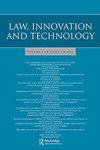Regulating cell-cultured animal material for food systems transformation: current approaches and future directions
Q1 Social Sciences
引用次数: 3
Abstract
ABSTRACT Proponents and developers of cell-cultured animal material (i.e. lab-grown meat) vest the innovation with the capacity to transform food systems by replacing, or significantly reducing, intensive use of animals in food systems. This article argues that cell-cultured animal material reflects lock-in to the incumbent, productivist regime for agricultural innovation. First, the article positions cell-cultured animal material as broadly consistent with the paradigm underlying intensive animal agriculture and related innovations. Secondly, it 2 explores how intellectual property has become the regulation-by-default of cell-cultured animal material reinforcing well-known limits of intellectual property rights to transform agricultural systems. Thirdly, it considers the broader regulatory context for cell-cultured animal material. The article shows how the claims by proponents and the responses from incumbent industry actors have narrowed regulatory responses preventing regulators from engaging with deeper questions about, and pathways for, food systems transformation; and, it concludes by briefly considering an alternate regulatory approach to cell-cultured animal material.调节细胞培养的动物材料用于食物系统转化:目前的方法和未来的方向
摘要细胞培养动物材料(即实验室培育的肉类)的支持者和开发人员赋予这项创新以通过取代或显著减少动物在食品系统中的密集使用来改变食品系统的能力。本文认为,细胞培养的动物材料反映了对农业创新现行生产力制度的锁定。首先,文章将细胞培养的动物材料定位为与集约动物农业和相关创新的范式大致一致。其次,它2探讨了知识产权如何成为细胞培养动物材料的默认监管,强化了众所周知的知识产权限制,以改变农业系统。第三,它考虑了细胞培养动物材料的更广泛的监管背景。这篇文章展示了支持者的主张和现任行业行为者的回应如何缩小了监管回应的范围,阻止了监管机构参与有关食品系统转型的更深层次的问题和途径;最后,它简要地考虑了一种对细胞培养的动物材料的替代调节方法。
本文章由计算机程序翻译,如有差异,请以英文原文为准。
求助全文
约1分钟内获得全文
求助全文
来源期刊

Law, Innovation and Technology
Social Sciences-Law
CiteScore
4.50
自引率
0.00%
发文量
18
期刊介绍:
Stem cell research, cloning, GMOs ... How do regulations affect such emerging technologies? What impact do new technologies have on law? And can we rely on technology itself as a regulatory tool? The meeting of law and technology is rapidly becoming an increasingly significant (and controversial) topic. Law, Innovation and Technology is, however, the only journal to engage fully with it, setting an innovative and distinctive agenda for lawyers, ethicists and policy makers. Spanning ICTs, biotechnologies, nanotechnologies, neurotechnologies, robotics and AI, it offers a unique forum for the highest level of reflection on this essential area.
 求助内容:
求助内容: 应助结果提醒方式:
应助结果提醒方式:


